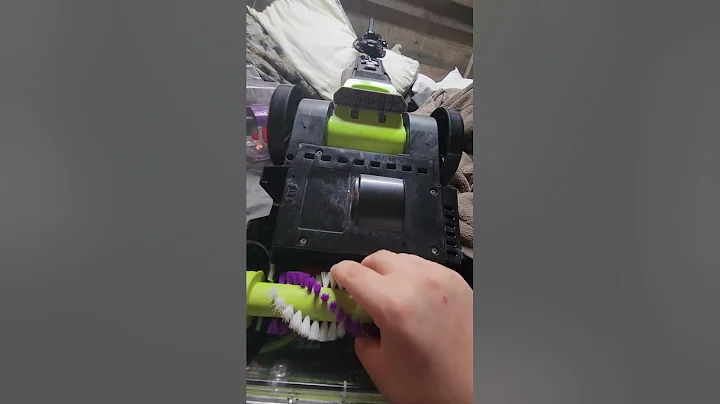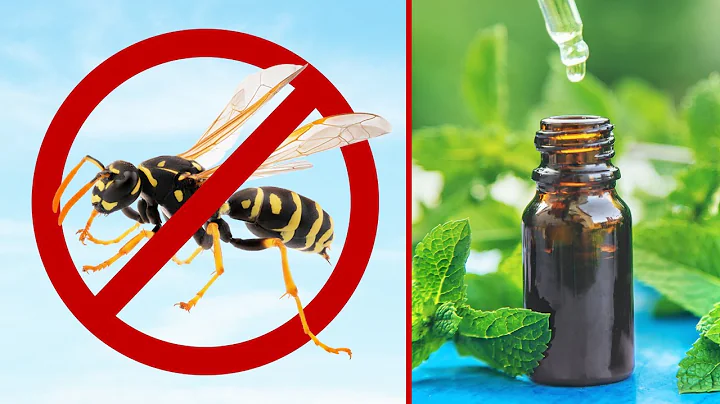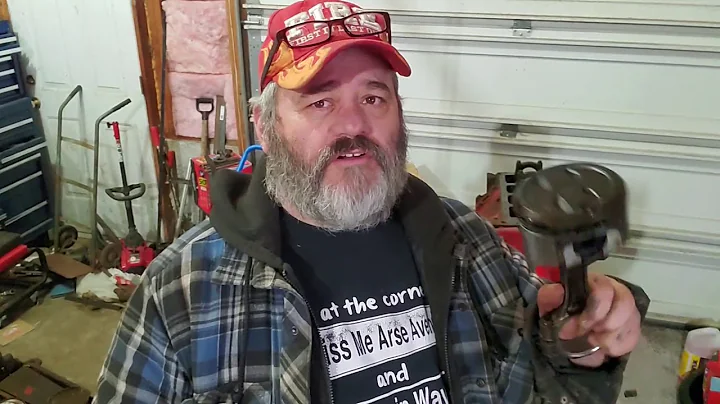Efficient Tumbleweed Removal Device: A Triumph of Engineering and Collaboration
Table of Contents
- Introduction
- The Problem of Tumbleweeds
- The Need for a Solution
- The Role of New Mexico State University
- Designing the Tumbleweed Device
- Mechanized Drum and Farm Implement Inspiration
- The Tumbleweed Pickup Process
- Challenges in Handling Tumbleweed
- Field Testing and Future Plans
- Conclusion
The Problem of Tumbleweeds
🌬️ Introduction
Tumbleweeds may be iconic symbols of the American West, but they pose a significant problem in the western United States. With flat and treeless landscapes, these rolling weeds become a nuisance when they stop against highway fences and medians. The relentless winds cause them to scatter, leading to issues of obstruction and safety hazards on the roads. To tackle this problem, a team of students and faculty at New Mexico State University's advanced manufacturing center in Las Cruces has taken up the challenge of creating a device that can efficiently and swiftly eliminate these pesky tumbleweeds.
The Need for a Solution
🌱 The Persistence of Tumbleweeds
The Alliance for Transportation Research, a consortium of state and local highway governments throughout the western United States, recognized the need for removing tumbleweeds from highway medians and crash barriers. The areas around downtown Albuquerque and Santa Fe were particularly affected. Initially, tumbleweed control was handled manually, with maintenance crews spending hours driving along the shoulders, gathering and disposing of the tumbleweeds. This labor-intensive and time-consuming process prompted the district manager of district three in Albuquerque to seek a mechanized solution.
The Role of New Mexico State University
🏫 Partnership with New Mexico State University
The Alliance for Transportation Research approached New Mexico State University to collaborate on designing a solution for the tumbleweed problem. The university's students were enlisted to form a design team and address the pressing issue that was affecting the state of New Mexico. The project gained attention not only from the state highway and transportation departments but also from federal agencies, showcasing the potential impact of this innovation in tackling tumbleweed-related challenges across the western United States.
Designing the Tumbleweed Device
🔧 Inspiration from Farm Implements
To devise an effective solution, the team explored various possibilities. The original idea proposed by Mr. Steve Harris, the district manager, was a mechanized drum resembling a farm implement. Taking inspiration from rotating fingers in hay balers, the team incorporated this concept into the tumbleweed pickup mechanism. The device was designed to grasp tumbleweeds aligned along any barrier, enabling efficient removal and disposal.
The Tumbleweed Pickup Process
🌾 Addressing Handling Challenges
One of the primary challenges tackled by the team was the handling of tumbleweeds. These weeds are notorious for breaking apart easily when transported, making it difficult to convey them without scattering them further. To overcome this hurdle, the team devised a system of fingers that guided the tumbleweeds along the entire path, while also compressing and directing them into a chute. This ensured that the tumbleweeds could be effectively transported and contain their scattering.
Field Testing and Future Plans
🌎 Real-world Testing and Iterations
The project has garnered significant interest from various stakeholders within and beyond New Mexico. Representatives from state and federal agencies have shown keen interest in the tumbleweed device and its potential applications, even beyond highway maintenance. Field tests are scheduled to begin at the end of the month, primarily in district three of Albuquerque. The device's performance will be closely evaluated, and feedback will be incorporated for further refinements. The team is already working on the second-generation prototype, aiming to develop a commercially successful device.
Conclusion
🌟 A Triumph of Engineering and Collaboration
The collaboration between New Mexico State University and the Alliance for Transportation Research has resulted in an innovative solution to the persistent problem of tumbleweeds. Through the dedication and ingenuity of students and faculty, a mechanized device has been designed to efficiently collect and dispose of tumbleweeds along highways and medians. This project showcases the immense potential of academic-industry partnerships and the impact they can have on local communities. With ongoing testing and further iterations, the hope is to establish a long-lasting solution to the tumbleweed menace that not only benefits New Mexico but also serves as a model for other states facing similar challenges.
Highlights:
- Tumbleweeds are a significant problem in the western United States, particularly along highways and medians.
- New Mexico State University is working on a mechanized device to efficiently remove tumbleweeds.
- The device takes inspiration from farm implements and incorporates rotating fingers to pick up the tumbleweeds.
- Handling the tumbleweeds without causing scattering poses a challenge, but a solution has been devised using a series of fingers and a compression chute.
- Field testing will soon commence, with plans for further iterations and eventual commercialization of the device.
FAQ:
Q: What is the Alliance for Transportation Research?
A: The Alliance for Transportation Research is a consortium of state and local highway governments in the western United States, dedicated to addressing transportation issues in the region.
Q: How did New Mexico State University get involved in solving the tumbleweed problem?
A: The Alliance for Transportation Research approached the university and requested the collaboration of its students and faculty in designing a solution for the tumbleweed problem.
Q: Why is handling tumbleweeds challenging?
A: Tumbleweeds are prone to breaking apart, making it difficult to transport them without further scattering. The team had to devise a system of fingers and a chute to guide and compress the tumbleweeds effectively.
Q: What are the future plans for the project?
A: After the initial field tests, the team will incorporate feedback to refine the device. They are also working on the second-generation prototype to develop a commercially viable solution.







